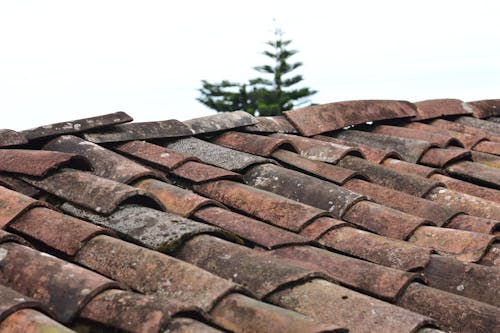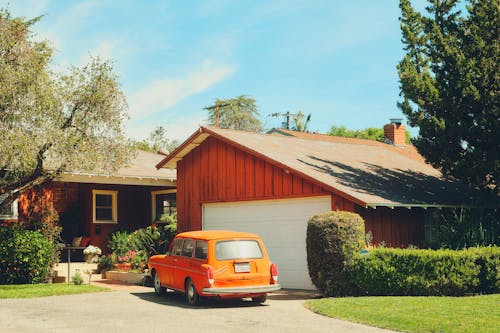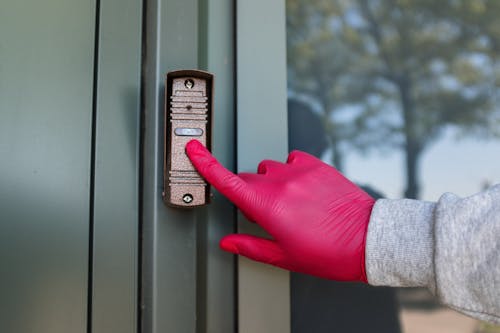1. Fined $250 for a child’s bicycle in driveway

In Austin, Texas, a father received an escalating fine when his daughter left her bike in her grandmother’s driveway—for just ten minutes. No warning, just a photo and a citation. The fine doubled when they appealed. A bicycle—on private property—for under a quarter hour—led to criminal tribute.
This illustrates how HOAs can treat kids as crime scenes. It’s petty enforcement masquerading as legal authority. And it humiliates commonsense with punitive bureaucracy. You can’t help but laugh if it wasn’t so frustrating and unfair.
2. You can’t plant more than 14 rose bushes in your yard

Believe it or not, a homeowner in Rancho Santa Fe, California, was fined and even foreclosed upon for exceeding a rigid limit on roses. The HOA insisted that anything beyond perhaps a dozen was unacceptable—even for hobby gardeners. It’s a perfect example of rules that feel more architecturally draconian than aesthetic. This sort of rule lands in the satirical realm because it treats horticulture like restricted zoning.
In a way, it shows how HOAs can micromanage aesthetics to absurd extremes. The homeowner in question ultimately lost their home and was slapped with six‑figure legal fees. It’s one thing to manage common areas—another to control each petal. That level of control just can’t be justified as reasonable.
3. Must match neighbor’s shingles perfectly—even after plane crash

After a tragic plane crash destroyed a man’s house in Sanford, Florida, he rebuilt—and was ordered by the HOA to install identical shingles. He was legally threatened and forced to match his neighbors’ roofs exactly, despite emotional trauma and practicality. The rule treated grief and rebuilding like architectural non‐conformity. It’s almost cartoonish: you rebuild your home, and the HOA supervises your shingle choices.
That’s an example of enforcing conformity to the point of cruelty. The HOA didn’t care about personal loss or mechanical safety if the roof looked slightly different. A homeowner recovering from tragedy shouldn’t have to negotiate shingles. That is rule enforcement taken way too far.
4. No “For Sale” signs whatsoever

In Tennessee, a homeowner was prohibited from placing a simple real estate sign in front of their house. They were forced to hide the sign in a window or forgo it entirely. This makes the process of selling your own home feel clandestine. It’s absurd because the HOA insists on controlling speech through signage.
You’d think putting up a sign is basic homeowner freedom—but not in this case. Even if local laws allow signage, the HOA enforced silence. It’s a bureaucratic overreach with zero sensitivity to a selling homeowner. And it defeats the whole purpose of a “For Sale” sign in the first place.
5. You can’t park in your own driveway

In one upscale California neighborhood, residents discovered they weren’t allowed to park in their own driveways. The HOA instead allocated shared parking lots and mailed residents near fines if they violated the rule. Guests had to park a mile away. It’s satirical because the homeowner owns the driveway but doesn’t control who drives in it.
This flips ownership logic on its head—your own driveway feels less yours. The HOA acted like a traffic cop managing private space. For many, this rule was the breaking point between save‑the‑look enforcement and daily life control. It’s emblematic of aesthetic extremes.
6. Granddaughter under 55 not allowed—even as family

An elderly couple in Clearwater, Florida, adopted their six‑year‑old granddaughter and moved her in—only to be told the 55+ retirement community HOA forbade it. The child wasn’t technically “retired,” so they were in violation. Social services and compassion counted for nothing under this HOA regime. That level of insensitivity and rigidity reads like parody—but it was real.
Imagine being forced to remove a family member because of bureaucratic age limits. The rule treated human life like a membership checklist. It lacked any common-sense or kindness. The HOA prioritized abstract demographics over family bonds.
7. Banned front‑yard vegetable gardens

In Richmond, Virginia, one HOA banned residents from growing vegetables in their front yards—no matter how neat or sustainable. It was deemed inappropriate “curb appeal,” even though many pedal for sustainable food sourcing. Growing mint or tomatoes got dunked for aesthetics. The rule belongs in a satire about suburban absurdity.
It pits sustainability against appearance policing. A healthy edible garden became a threat to HOA decorum. Ironically, it discourages eco‑conscious habits. Common sense meets the HOA no‑plant aesthetic wall.
8. Lawn grass must be exactly 2–3 inches tall

In Tacoma, Washington, a rule dictated that grass had to stay between two and three inches tall—no more, no less. Homeowners were fined if it crossed the boundary or dipped too low. Some measured with rulers; others lived in terror of grass growth. The rule fairytale is that grass can only exist within aesthetic tolerances.
It turned lawn care into a science experiment. One-half inch over, and you’re fined; half an inch under, also. It’s a perfect example of absurd micromanagement. Normal neighbors suddenly felt like overseen lab subjects.
9. Holiday lights must be white only

One HOA banned any holiday lights except pure white bulbs—no colors allowed. Blue, red, green, multi‑colour—all forbidden. It turned festive cheer into sterile conformity. That rule suggests that even seasonal joy must align with architectural blandness.
It’s a holiday spirit assassin disguised as décor policy. You wrap your house with twinkling joy—and HOA says “no color.” That’s overreach. Christmas should let you shine—unless the HOA says otherwise.
10. “Style police” for doorbell frames

An HOA newsletter dictated that doorbell frames couldn’t be square or brass, nor feature novelty shapes or team logos. Unless rotated into a diamond shape and neutral colored, anything novel was banned. It’s satire: an HOA cares deeply about doorbell geometry. This level of micromanaging door aesthetics is both petty and deeply comedic.
Homeowners felt like they’d need architectural design degrees to buy a doorbell. It’s control taken to ornamental extremes. Even a doorbell becomes regulated art. And the rulebook apparently cares more than the homeowner.
11. Garage door only open for five minutes

In one HOA, residents were told their garage doors could remain open for no more than five minutes—any longer triggered a violation. Gardening, unloading groceries, or even catching a breath could cause a fine. It’s a rule carved out of hurry culture. The HOA is basically timing your life at the garage.
Shutting your door for more than five minutes could feel like a crime. It’s absurd in practice and surreal in enforcement. No casual lounging in front of your home allowed. Life doesn’t run on timers—unless your HOA says so.
12. Fined for handing out free cold water

In Arizona, a homeowner who placed a water cooler in his driveway to give out free bottled water during extreme heat was fined repeatedly—$100 per instance. The HOA claimed it violated community advertising rules because signage accompanied the cooler. Even though the gesture helped neighbors and delivery drivers. This rule penalized kindness in public health climate.
It turned generosity into punishable visibility. A community initiative was branded illegal advertising. The hero became a rule‑breaker for offering water. It highlights how HOAs sometimes penalize altruism.
This post 12 HOA Rules So Extreme They’re Satirical was first published on American Charm.


